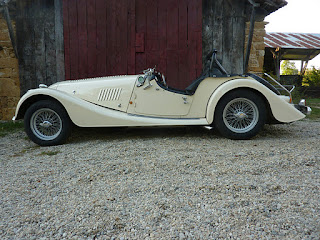 mid- winter. Salabert. oil on canvas. 120x120 cms.
mid- winter. Salabert. oil on canvas. 120x120 cms.It is unusual for me to be able to make a painting straight out of the box. I am an inveterate fiddler and find it difficult to leave things alone to the point of reworking whole areas long after I have put a painting aside. They are rarely precious enough to keep as they are, but this one has come together in a seemless movement during the weeks of mid-winter.
I like Francis Bacon's remarks about splashing the stuff on, but also what he said about the way in which the painter deliberately loses what is there in order to risk some new gain. That ebb and flow on the canvas delights me, trying not to worry about what might be but what is now.
It is a different painting to that with which I ended last year: I am still exploring the photograph as a means of seeking out areas of light and dark, detail and spatial ambiguities. The last two paintings are based upon small areas, seen through my workroom door and it is these that I think offer clues to some that might be done during the new year.








































